Respiratory Therapist Cover Letter Examples

May 29, 2025
|
12 min read
Learn how to craft an effective respiratory therapist cover letter that breathes life into your job application. Discover tips to blow away the competition and ensure your skills stand out in the healthcare field.
Rated by 348 people
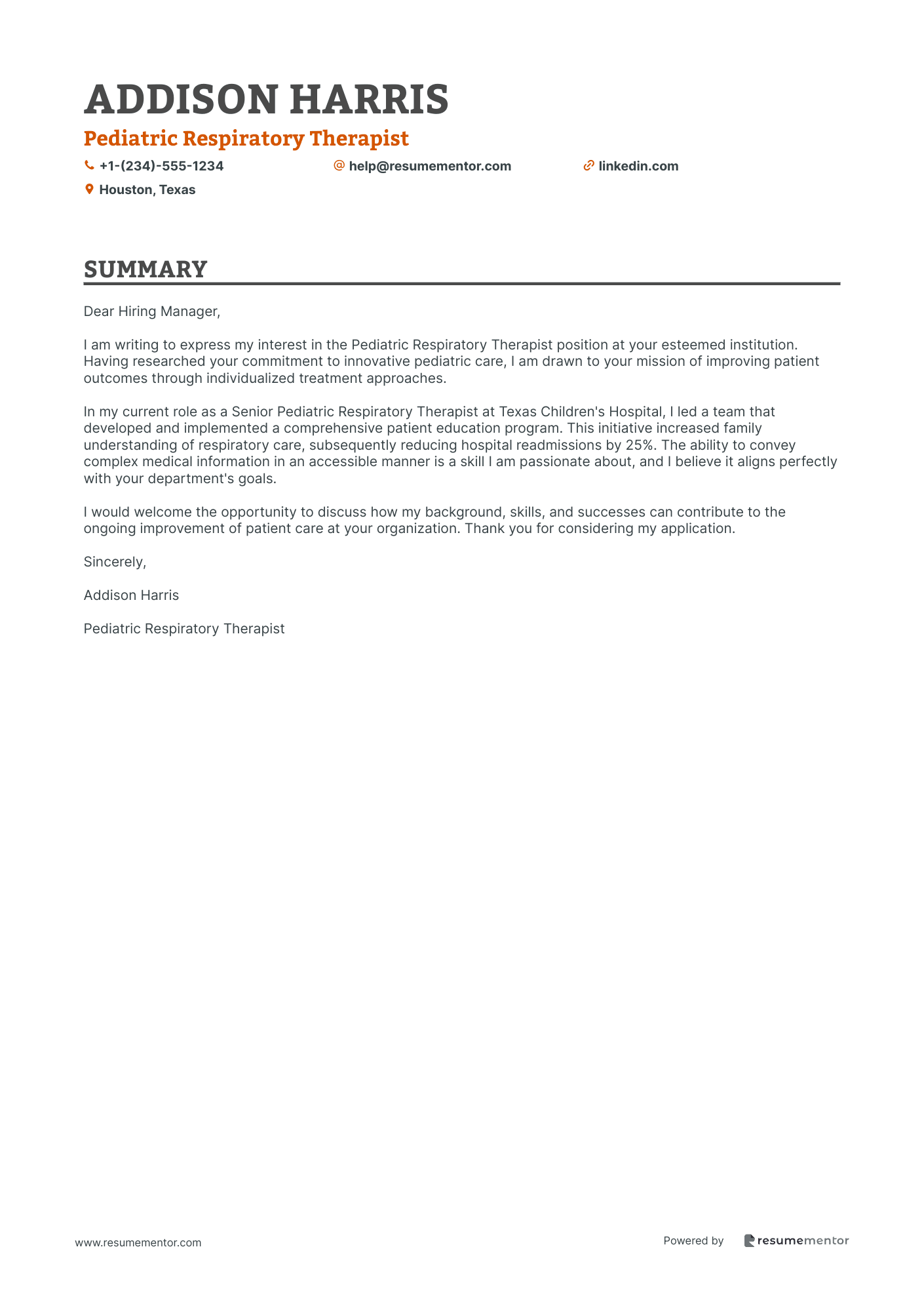
Pediatric Respiratory Therapist

Critical Care Respiratory Therapist

Pulmonary Rehabilitation Therapist
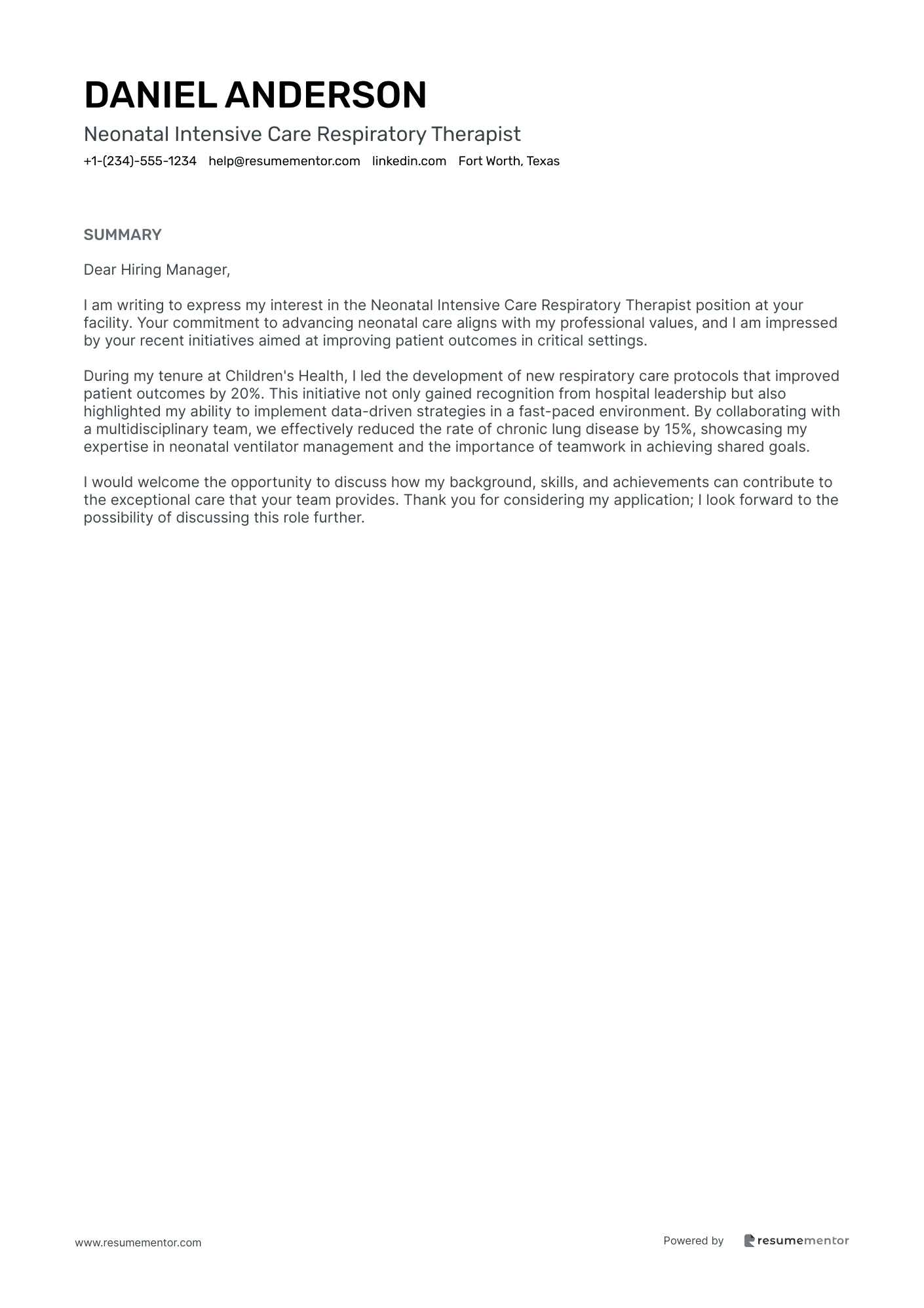
Neonatal Intensive Care Respiratory Therapist
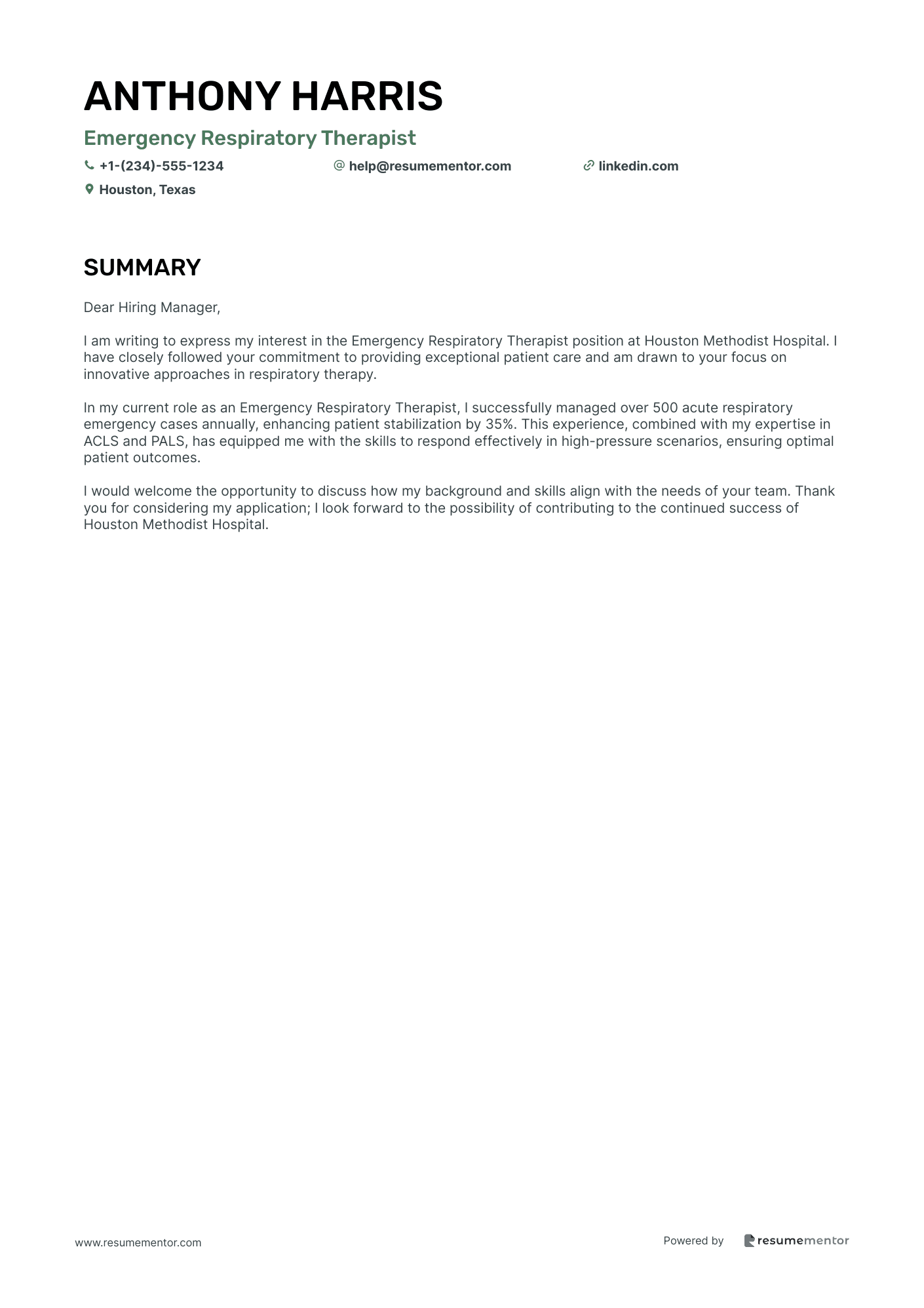
Emergency Respiratory Therapist

Cardiopulmonary Diagnostic Therapist
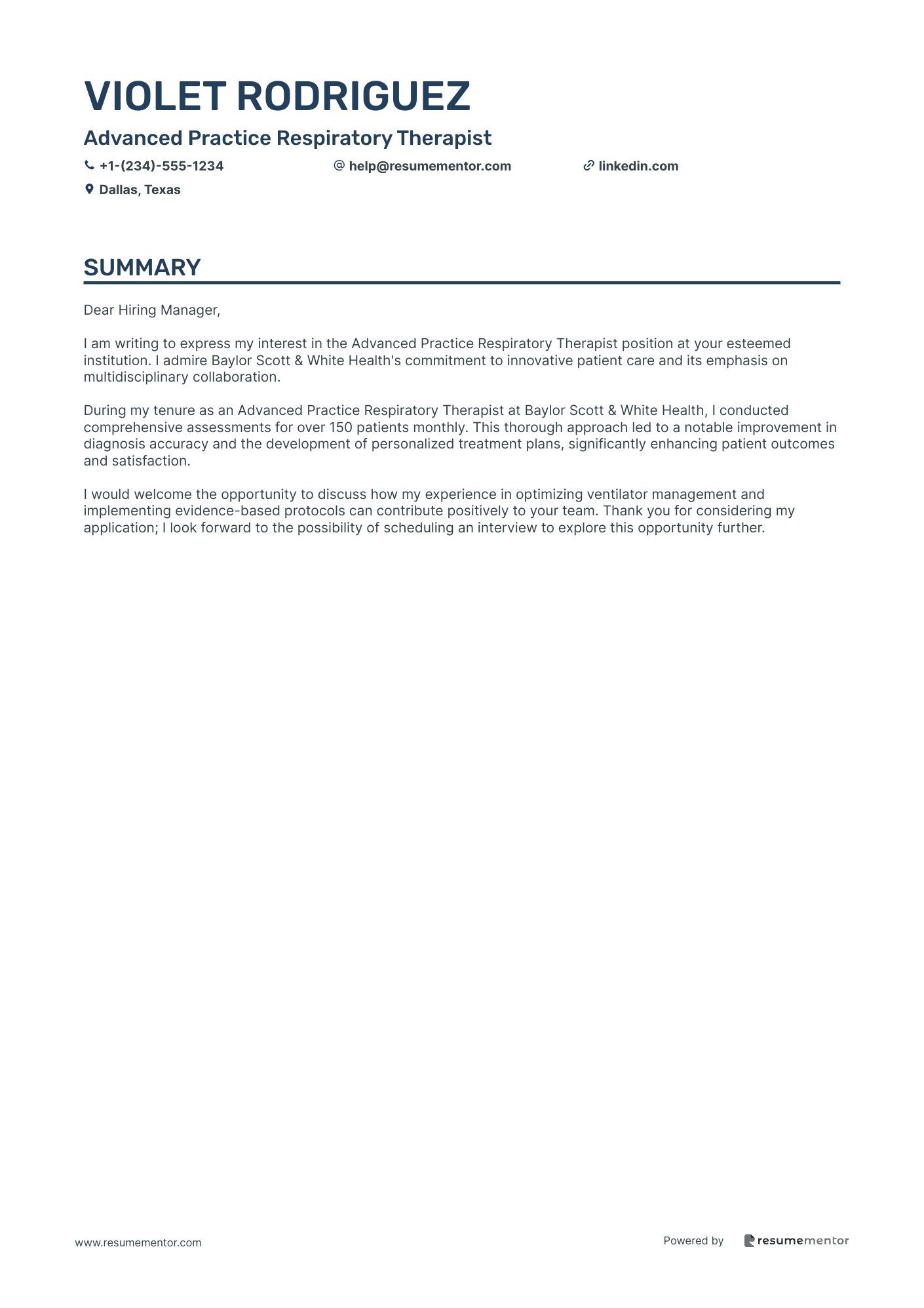
Advanced Practice Respiratory Therapist
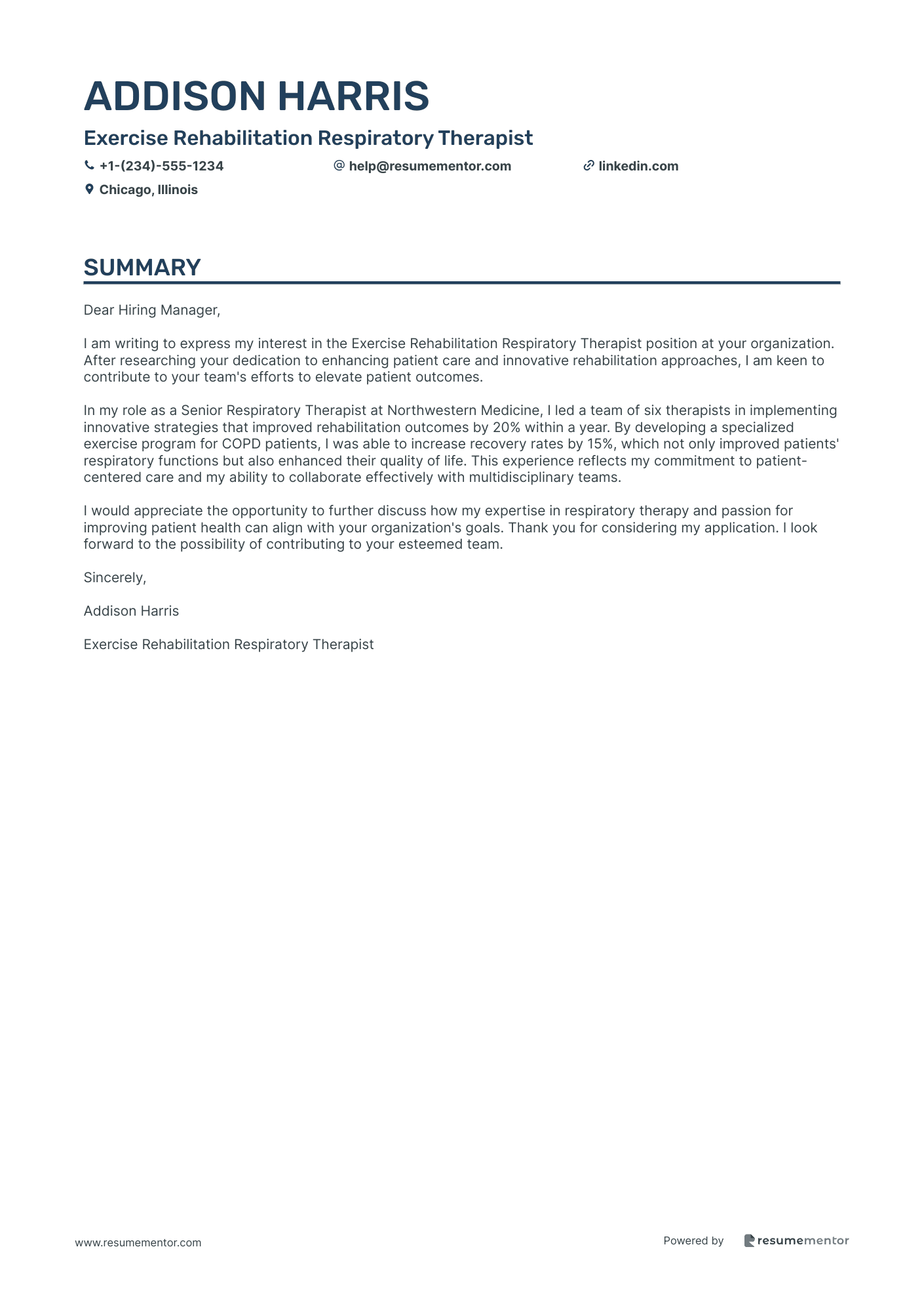
Exercise Rehabilitation Respiratory Therapist
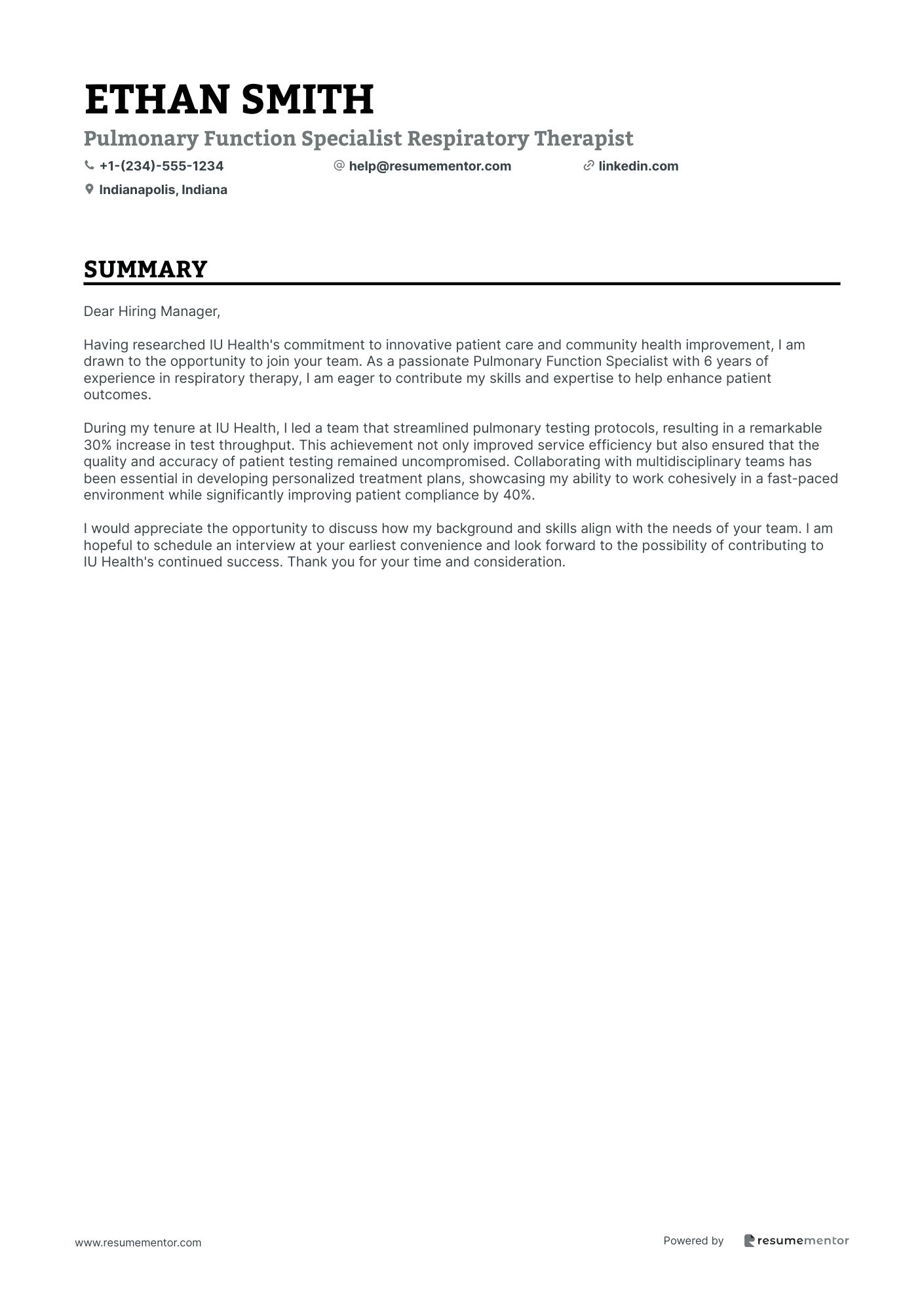
Pulmonary Function Specialist Respiratory Therapist
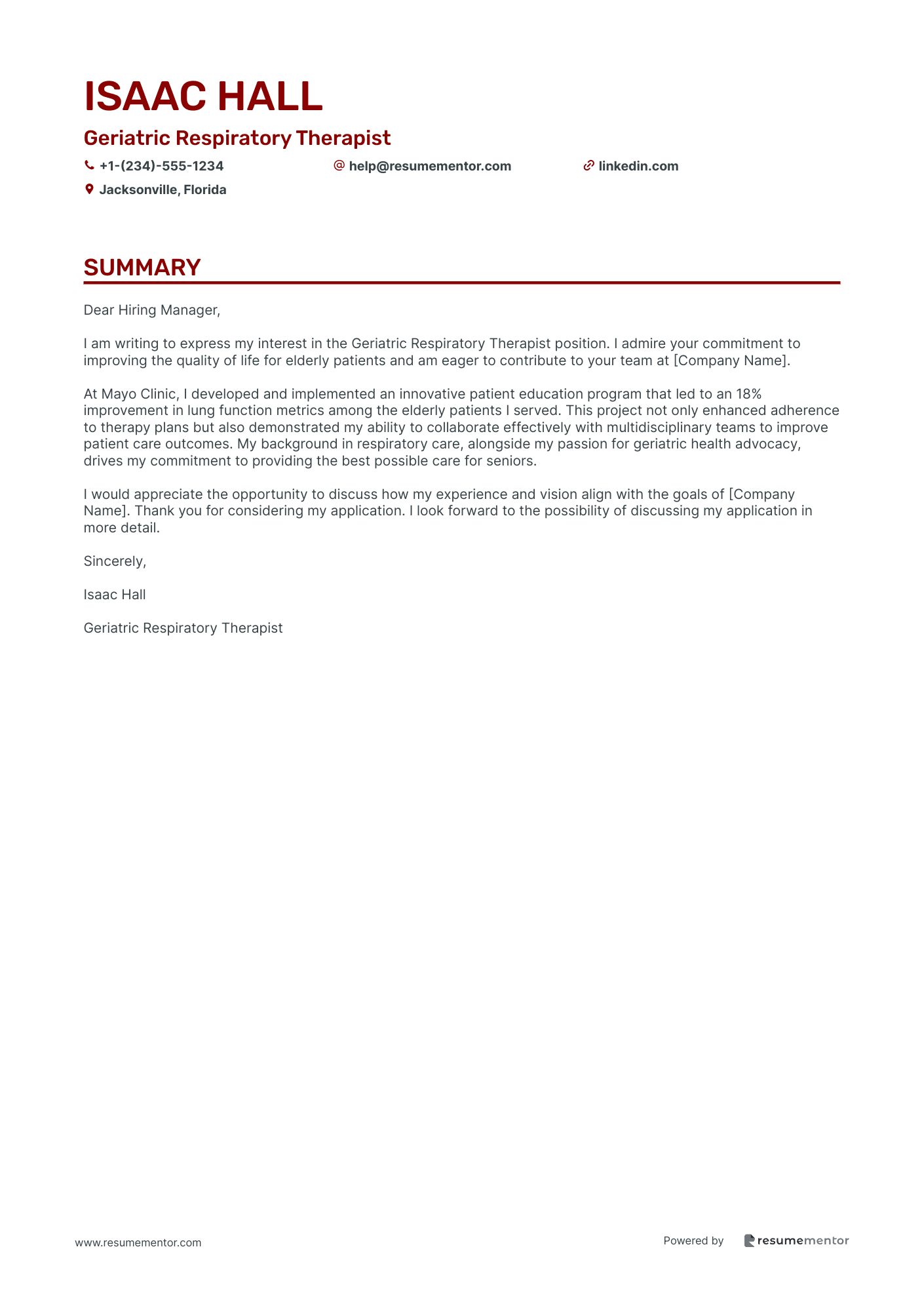
Geriatric Respiratory Therapist

Pediatric Respiratory Therapist cover letter sample
Critical Care Respiratory Therapist cover letter sample
Pulmonary Rehabilitation Therapist cover letter sample
Neonatal Intensive Care Respiratory Therapist cover letter sample
Emergency Respiratory Therapist cover letter sample
Cardiopulmonary Diagnostic Therapist cover letter sample
Advanced Practice Respiratory Therapist cover letter sample
Exercise Rehabilitation Respiratory Therapist cover letter sample
Pulmonary Function Specialist Respiratory Therapist cover letter sample
Geriatric Respiratory Therapist cover letter sample
Related Articles
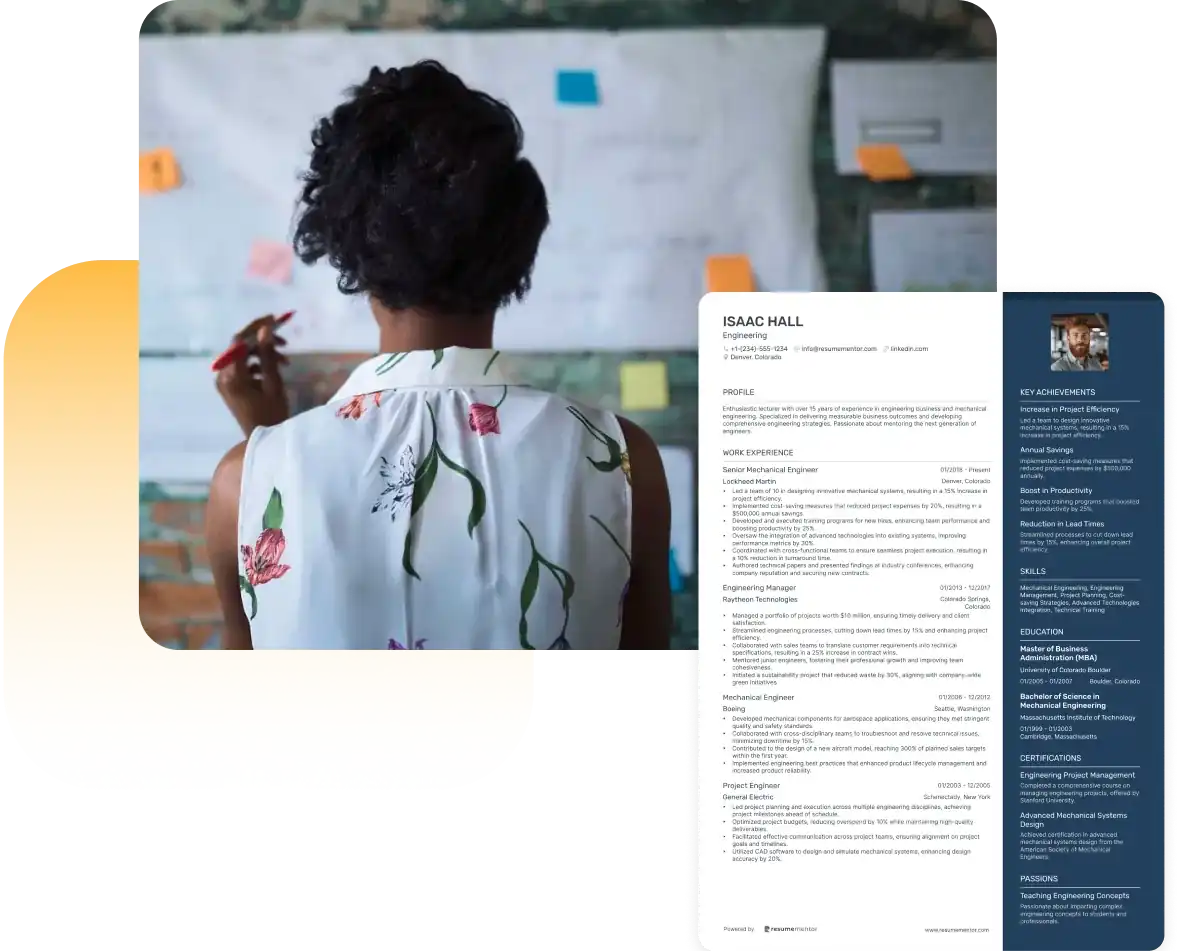
Continue Reading
Check more recommended readings to get the job of your dreams.
Resume
Resources
Tools
© 2025. All rights reserved.
Made with love by people who care.
